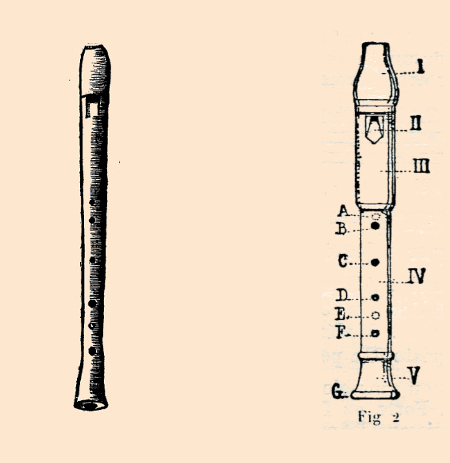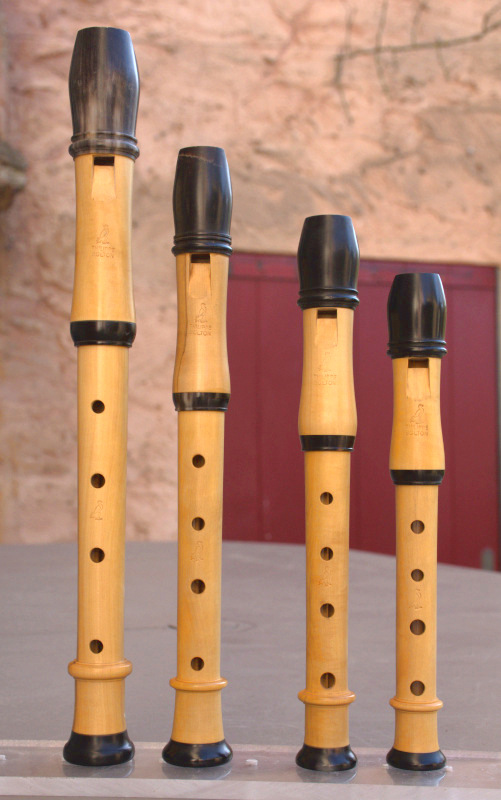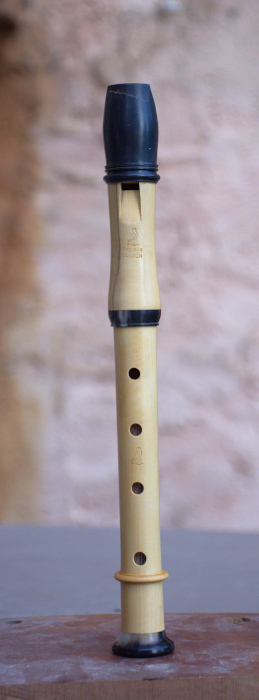PHILIPPE BOLTON
flageolets & recorders
A "beak flageolet" after an unsigned instrument
(late eighteenth or early nineteenth century)
|
|
The so called "beak" flageolet (flageolet à bec) is the oldest form of the instrument. Its existence has been reported in texts from the sixteenth to the nineteenth centuries.

The instrument opposite is a copy of a beautiful boxwood French flageolet that was probably made at the end of the eighteenth century.
Like all French flageolets it has four holes in front and two thumb holes on the back, of which the upper one is used for playing high notes as on a recorder. It is tuned in F at 435 Hz. |
This "beak flageolet" is now made in four different sizes, from left to right:
|

|
The flageolet in G n° 1025 after an anonymous late eighteenth century instrument can be heard in the album Les Amours d'un Rossignol with Hugo Reyne and La Simphonie du Marais. You can listen to an extract here.
You can listen to these instruments here
The Following fingering charts are available:
Two versions of this flageolet at baroque pitch
